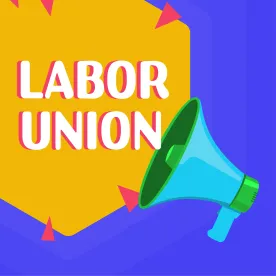At the end of last week, the National Labor Relations Board (the “Board”) issued two huge blows to employers that give significant advantages to unions and ease their ability to achieve status as a certified bargaining representative.
As we previously reported and discussed here, the General Counsel of the Board (the “General Counsel”) sought reinstatement of union recognition without requiring the Board to hold a representation election. On August 25, 2023, the Board, through its decision in Cemex Const. Materials Pac. LLC, 372 NLRB No. 310 (Aug 25, 2023), created a new standard that essentially revived the dormant Joy Silk Mills doctrine with some modifications, thus allowing unions to achieve recognition as the certified bargaining representative of employees without requiring a formal NLRB secret-ballot election.
Additionally, on August 24, 2023, the Board issued a direct final rule which will reinstate many of the 2014 “quickie election” rules for representation cases that greatly accelerates the timeline for elections and makes it much easier for unions to organize.
In practice, if this new standard is not reversed by the federal courts, we expect most unions will organize by demanding immediate employer recognition or by virtue of NLRB determinations that the employer committed at least one unfair labor practice before an election was held, thereby nullifying the election results and declaring the union certified based on a pre-election claim of majority support.
These changes radically shift the legal landscape for companies addressing demands for recognition and organizing campaigns, and require significant proactive approaches to address the new reality for how unions will organize and win certifications going forward.
The Cemex Decision
In Cemex, the General Counsel asked that the Board overturn Linden Lumber Division, Summer & Co., 190 NLRB 718 (1971), revd. sub. nom. Truck Drivers Union Local No. 413 v. NLRB, 487 F.2d 1099 (D.C. Cir. 1973), revd. 419 U.S. 301 (1974) which allowed employers to lawfully reject a demand for recognition and require filing of a petition with the Board, and reinstate the standard from Joy Silk Mills Inc., 85 NLRB 1263 (1949), enfd. in relevant part, 185 F.2d 732 (D.C. Cir. 1950), cert denied 341 U.S. 914 (1951). Under the Joy Silk standard, an employer would be in violation of Section 8(a)(5) and 8(a)(1) by refusing to agree to bargain with a union who demanded recognition and contended that they had majority support absent good-faith doubt as to the union’s majority status.
The Board, agreeing with the General Counsel that the current scheme for remedying an employer’s unlawful refusal to recognize and bargain with the employees’ designated bargaining representative is inadequate to safeguard the right to organize, overruled Linden Lumber. Instead of adopting the standard from Joy Silk as is, the Board announced a new framework that modifies Joy Silk for determining when an employer has unlawfully refused to recognize and bargain with a designated majority representative of its employees.
The New Cemex Standard and Obligations for Employers Presented With a Demand for Recognition
Under this new standard, when presented with a claim of majority support, an employer has two options:
-
Immediately grant recognition without any NLRB election; or
-
File its own NLRB petition seeking an election within 2 weeks of a union’s demand for recognition in order to test the union’s majority status or the appropriateness of the unit (assuming the union has not already filed a petition pursuant to Section 9(c)(1)(A)).
If the employer fails to take either step, the NLRB will order mandatory union recognition (with no NLRB election) unless the employer – in a later unfair labor practice (ULP) proceeding – proves that the union did not have majority support or that the claimed bargaining unit was inappropriate.
According to the Board, the filing of an employer’s own NLRB petition pursuant to Section 9(c)(1)(B) will provide employers with the opportunity to challenge the union’s majority status through a representation election if the Board, upon investigation and hearing, finds that a question of representation exists. Should an employer refuse to recognize the union and fail to promptly file a NLRB petition, a union still may file a 8(a)(5) refusal to bargain unfair labor practice charge against the employer and, if majority support in an appropriate unit is proven, the Board will find a 8(a)(5) violation for refusal to recognize and bargain and will issue a remedial bargaining order. The risk of a union filing an unfair labor practice charge for failure to act essentially creates an obligation that employers either (i) file a NLRB petition, or (ii) recognize and bargain with the union.
Most importantly, employers should be aware that the standard outlined in the Board’s majority opinion will allow the Board to issue remedial bargaining orders more widely to deter employers from engaging in misconduct and unfair labor practices before an election as a dilatory tactic.[1] Stated differently, where there is a pending petition, regardless of the filing party, and the employer commits even a single unfair labor practice under 8(a)(1) or 8(a)(3) that would require setting aside the election, the petition will be dismissed and the Board will issue a remedial bargaining order requiring union recognition. The Board emphasized that the new standard and availability of remedial bargaining orders will more properly focus the impact of unfair labor practices on the pending petition and election (if one is held), instead of focusing the potential impact of unfair labor practices on the success of future rerun elections.
Thus, while the Cemex rules permit the employer to petition the NLRB for an election in response to a union recognition demand, virtually any unlawful conduct during the period preceding an election will prompt the Board to issue a mandatory “bargaining order” requiring union recognition. In light of this, Cemex has radically changed the threshold that will prompt the NLRB to issue mandatory “bargaining orders” based on any unlawful conduct that sets aside an election, and dramatically changes the much higher threshold embraced in two U.S. Supreme Court cases that validated the NLRB’s issuance of “bargaining orders” only when unlawful conduct made it “improbable” that a ”fair election” can be held.
The Board also held that the Cemex decision applies retroactively in order to avoid inconsistency in pending cases, restore judicially approved standards, and ensure the decision serves its intended goal of adequately protecting employees exercising their Section 7 rights.
Member Kaplan dissented in part from the majority opinion with respect to the standard that would allow the Board to issue the remedial bargaining orders more easily when an employer has engaged in conduct that could be classified as a ULP under 8(a)(3) or (1), and classified that portion of the majority opinion as dicta given that the employer in Cemex engaged in over 20 unfair labor practices, not one or a few. Further, in his dissent Member Kaplan emphasized that the majority opinion effectively takes away an employee’s right under the National Labor Relations Act (the “Act”) to participate in a secret ballot election and warns that the decision will likely create much litigation.
We anticipate that legal challenges to the Cemex decision will materialize in the coming months, with the overriding challenge to the decision premised on material deviation of NLRB elections as the standard method to determine union majority status and the reliance on card check despite well-established U.S. Supreme Court precedent and repeated legislative failures to adopt this method for union certification.
Final Rule on Representation Procedures
On August 24, 2023, the day before the Board handed down the Cemex decision, the Board issued a direct final rule[2] which will reinstate many of the 2014 “quickie election” procedures for representation cases with the intent of enhancing the “fair, efficient, and expeditious resolution of representation cases.” The Final Rule will take effect on December 26, 2023.
The Amendments of the Final Rule[3] are as follows:
Shortening the Timing of Opening of Pre-Election Hearing to 8 Calendar Days from Service of the Notice of Hearing.
Under the Final Rule, the pre-election hearing will generally be scheduled to open 8 calendar days from service of the notice of hearing. This is a shortening of the timeline from the 2019 Rule which allowed for a pre-election hearing to open 14 business days from service of the Notice of Hearing. Not only is the Board shortening the overall number of days between the Notice of Hearing and the opening of a pre-election hearing, it has shifted the timeline from use of business days to calendar days.
Limits on Regional Director Discretion to Postpone Pre-Election Hearings.
Regional Directors will only have discretion to postpone a pre-election hearing for up to 2 business days upon request of a party showing “special circumstances” and for more than 2 business days upon request of a party showing “extraordinary circumstances”. This is a dramatic change from the 2019 Rule that gave Regional Directors discretion to postpone a pre-election hearing for an unlimited amount of time upon request of a party showing good cause. In addition to shortening the time for postponement of a pre-election hearing, the Board raised the standard a party must demonstrate in order to receive a postponement from “good cause” to “special circumstances” for 2 business days and “extraordinary circumstances” for more than 2 business days.
Time for Nonpetitioning Party to File a Statement of Position.
A nonpetitioning party’s Statement of Position will be due to be filed by noon the business day before the opening of the pre-election hearing,thus the Statement of Position is due 7 calendar days after service of the Notice of Hearing. Under the 2019 Rule, a nonpetitioning party’s Statement of Position was due 8 business days after service of the Notice of Hearing.
Limits on Regional Director Discretion to Postpone Statement of Position Filing Deadline.
Regional Directors have discretion to postpone the due date for filing a Statement of Position for up to 2 business days upon request of a party showing “special circumstances” and for more than 2 business days upon request of a party showing “extraordinary circumstances.” Under the 2019 Rule, Regional Directors could postpone the filing deadline for an unlimited amount of time for a showing of good cause. Again, the Board heightened the standard a party must demonstrate in order to receive a postponement from “good cause” to “special circumstances” for 2 business days and “extraordinary circumstances” for more than 2 business days.
Removing the Requirement That a Petitioner File a Responsive Statement of Position.
Under the Final Rule, a petitioner will verbally respond to the nonpetitioning party’s Statement of Position at the start of a pre-election hearing. Under the 2019 Rule, the petitioner was required to file and serve a responsive Statement of Position 3 business days prior to the pre-election hearing. In addition to removing the burden of a filing from the petitioner, this amendment puts nonpetitioning parties at a disadvantage of not knowing what issues the petitioner will highlight at the hearing.
Shortening of Timeline for Employer to Post Notice of Petition for Election.
An employer will be required to post the Notice of Petition for Election in conspicuous places in the workplace and distribute electronically within 2 business days after service of the Notice of Hearing. This is in contrast to the 2019 Rule which provided an employer with 5 business days for posting and electronic distribution.
Limits on Litigable Issues During Pre-Election Hearing.
Disputes concerning an individual’s eligibility to vote or inclusion in an appropriate unit will not be litigated or resolved prior to an election. The pre-election hearing is reserved for resolution of questions of representation. Regional Directors have authority to exclude evidence that is not relevant to determining whether there is a question of representation. The 2019 Rule provided that questions regarding individual eligibility and inclusion were normally litigated at the pre-election hearing and resolved by the Regional Director prior to the election. By limiting pre-election hearings to questions concerning representation, the Board states that the parties will have the opportunity to resolve issues regarding unit placement during bargaining should the employees vote in favor of representation or through the use of the Board’s unit clarification procedure, thus severely limiting an employer’s ability to ever challenge employee eligibility. Not knowing whether certain employees will be eligible to vote ahead of an election can cause risk for employers when they seek to utilize managers and supervisors in any campaign activities.
Limit on Ability to File Post-Hearing Briefs.
Following a pre-election hearing, parties may only file post-hearing briefs with the Regional Director’s special permission and may only address subjects permitted by the Regional Director within the timeframe permitted by the Regional Director.
Following a post-election hearing, parties may only file post-hearing briefs with the hearing officer’s special permission and may only address subjects permitted by the hearing officer within the timeframe permitted by the hearing officer. The 2019 Rule allowed parties to file post-hearing briefs up to 5 business days following the close of a hearing and extensions of an additional 10 business days could be sought upon showing of good cause.
Simultaneous Transmission of Decision and Direction of Election, and Notice of Election That Contain Specific Election Details.
Regional Directors are to specify election details such as the type of election, date of election, time of election, location of election, and the eligibility period in the decision and direction of election, and are required to simultaneously transmit the Notice of Election with the decision and direction of election. Previously, under the 2019 Rule, Regional Directors had discretion to provide election details in a Notice of Election which could issue after a decision and direction of election.
Elections Will be Scheduled for “The Earliest Date Practicable” After Issuance of Decision and Direction of Election.
Regional Directors shall schedule elections for “the earliest date practicable” after issuance of a decision and direction of election. This eliminates the 20-business day waiting period between the decision and direction of election and the election that was contained in the 2019 Rule.
Key Takeaways
With the issuance of the Cemex decision and the Final Rule, we expect an increase in demands by unions for voluntary recognition by employers and the number of unfair labor practice charges filed.
Given that the Board’s decision in Cemex takes effect before the Final Rule, and the expectation of an increase in the number of demands for voluntary recognition, it is unclear how many elections will actually be held pursuant to the new procedures outlined in the Final Rule once they take effect in December. Since Cemex, in effect, creates an obligation for an employer to voluntarily recognize or otherwise risk the Board issuing a remedial bargaining order for virtually any allegations of an unfair labor practice, it is possible that the number of elections that are actually held pursuant to the Board’s Final Rule may actually decrease.
Since the Board’s recent actions substantially change representation procedures and create a large risk for employers to be subject to a remedial bargaining order, it is important that employers take the following steps to understand the recent changes and how best to continue to manage their workforces under a threat of organizing.
Understand the Updated Timelines and Obligations.
Both the Cemex decision and the Board’s final rule accelerate the timelines associated with representation procedures. It is important that employers are aware of these deadlines should they be presented with a demand for recognition or an organizing petition. Employers will want to ensure they preserve their right to file a NLRB petition under Cemex and understand that once approached with a demand for bargaining, an employer must decide whether to recognize and bargain with the union or file a petition. Employers that receive a demand for recognition from a union that alleges majority status should consider requesting that the union voluntarily share its evidence of majority support before the employer decides to reject the demand or file a NLRB petition. In addition, employers should assess the appropriateness of the unit and potential challenges to claims of majority and recognition demands (e.g., misrepresentations by union organizers about the purpose of a union authorization card that could invalidate cards, revocation of cards, contesting authenticity of cards, whether the union actually possessed valid authorization cards for a majority of employees given turnover or changes in the unit size and scope claimed by the union, etc.).
Properly Educate Management on Employee Rights Under the Act, and the Importance of Early Education on Authorization Cards and Union Advances.
Employers should take a proactive approach in educating supervisors and managers of employee rights under the Act, even if there is currently no reason to suspect organizing. This includes education regarding conduct that is unlawful during an organizing campaign. Given the shortened time frame with which an employer must file a NLRB petition to challenge a union’s majority status coupled with the future accelerated timelines under the Final Rule, there is a very small window for employers to prepare for an organizing campaign, pre-election hearing, and election, particularly if an employer is caught by surprise with a demand for recognition and/or a petition.
In addition, unions have often secured signed authorization cards from employees under the theme of “sign up to hear more”—without making clear that authorization cards could become an automatic basis for union recognition with no campaign and no election. It seems suspect that unions will change their tactics with authorization cards going forward, even though the cards will have a much greater chance of serving as the evidence of majority support and a union certification. Thus, employers have a much greater incentive now to proactively educate employees about authorization cards and the consequences of signing them.
Further, with the risk of a remedial bargaining order, an employer must prepare its managers and supervisors adequately so that they do not engage in conduct that could be deemed an unfair labor practice under 8(a)(1) or 8(a)(3), thus opening the door for such an order that would cause dismissal of any pending petition and require the employer to recognize and bargain with the union. For companies that follow the NLRB election petition route, avoiding an unfair labor practice will be critical to evading an automatic bargaining order after the election even if the union loses. While the types of violations found in Cemex would have always led to the invalidation of an election (e.g., threats of plant closure, discipline and discharge of union supporters, surveillance and interrogation), recent NLRB pronouncements greatly increase employers’ risk of unfair labor practices. For example, the General Counsel announced new limits on employers’ free speech rights, such as captive-audience speeches and other employer communications occurring during typical union elections. These activities—which until recently would not have resulted in an unfair labor practice charge—may now be a violation that could threaten the validity of an election and result in a subsequent bargaining order.
Review Employment Documents, Including Employee Policies and Handbooks.
In his partial dissent in Cemex, Member Kaplan voiced the concern that the majority standard that allows the Board to more easily issue remedial bargaining orders, coupled with the Board’s recent decision in Stericycle, Inc., 372 NLRB No. 113 (2023), which we discussed in detail here, makes it impossible for an employer not to commit an unfair labor practice that requires setting aside the election. Given the presumption established in Stericycle that a work rule is unlawful if a reasonable employee could interpret any isolated word or phrase in a work rule to restrict the exercise of Section 7 rights, it is important that employers review their employment policies and procedures for any language that could be deemed unlawful. The majority’s citation to Stericycle and statement that the standard in Cemex does not require a bargaining order as “the first and only option,” read in tandem with Board precedent that has deemed handbook policies as restrictive enough to warrant setting aside an election, indicate that even a single policy or incident of conduct could result in a remedial bargaining order under the Cemex standard.
Thus, if an employer decides to file a NLRB petition and wishes for the election results to be determinative of the union’s certification rights, careful review of all employment documents (policies and handbooks) is recommended and any campaign activity beyond sharing voluntary, written communications reviewed by labor relations counsel could provide a basis to challenge and void the election results—thereby certifying the union via the original majority status claim.
We will continue to monitor any new developments with respect to the Cemex standard and the Final Rule.
FOOTNOTES
[1] Prior to its decision in Cemex, remedial bargaining orders or “Gissel bargaining orders” were only issued in cases where an employer had engaged in such severe and pervasive unfair labor practices that the fairness of a future rerun election was unlikely. NLRB v. Gissel Packing Co., 395 US 575 (1969).
[2] The Board contends that it may rescind the 2019 Rule by direct final rule in order to return to procedures similar to those that were in effect following the implementation of the 2014 Rule because the provisions concern agency procedure and therefore are not required to go through notice and comment. Additionally, the Board points out that the provisions of the 2014 Rule it is reinstating previously went through notice and comment, where as the 2019 Rule was a result of direct rulemaking.
[3] The Final Rule amends 29 CFR §§ 102.63; 102.64(a); 102.66(a), (c), and (h); 102.67(b); and 102.69(c)(1)(iii).






 />i
/>i

